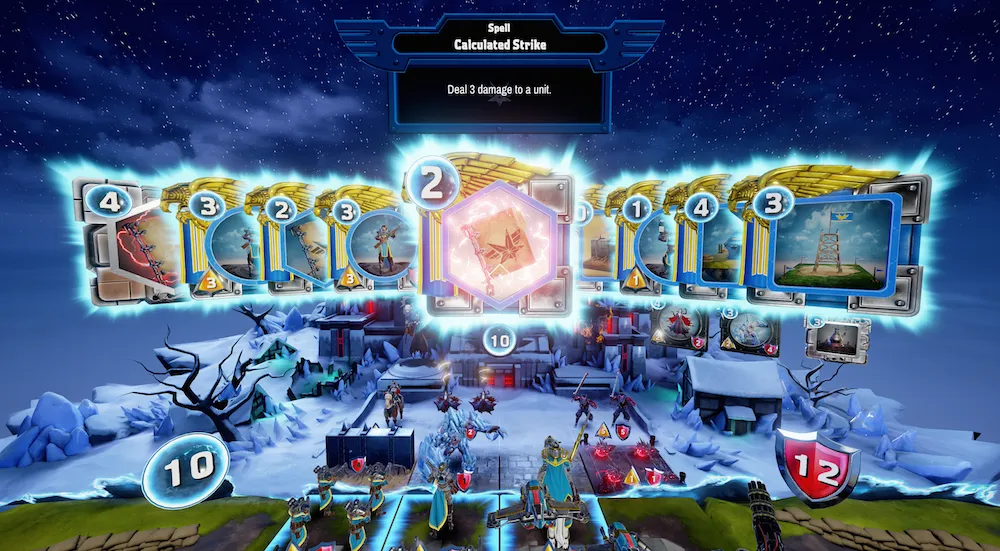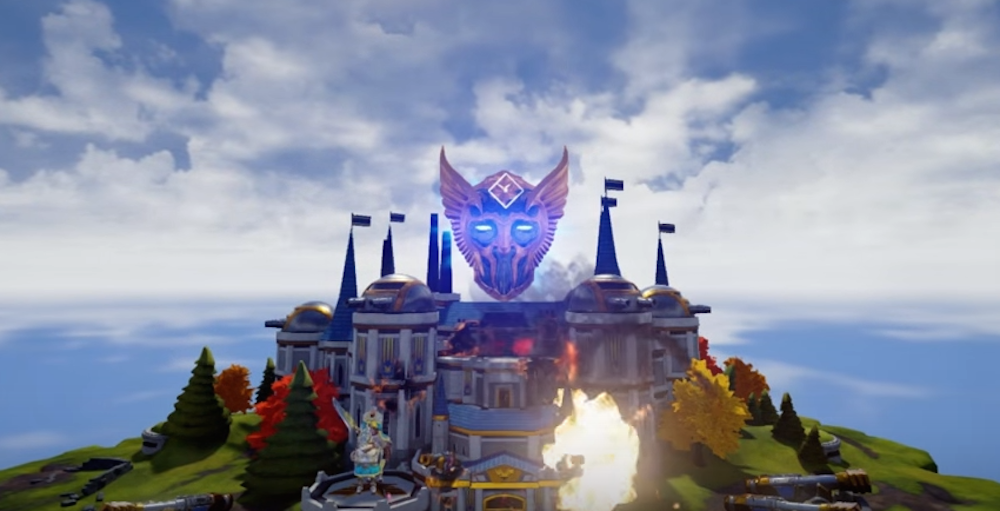When I was 13 I loved Yu-Gi-Oh. For those of you who were too busy figuring out how to talk to the opposite sex at that age I’ll explain. Yu-Gi-Oh is a Japanese cartoon, or Anime, that centered around a trading card game called Duel Monsters. Every episode of the show saw characters battling each other using these fantastical cards and the holographic imaging devices that brought them to life before their very eyes. I can’t tell you how often I would press my paper cards on the table, willing a real-life monster to spring out and attack my brother.
[gfycat data_id=”BothDownrightChevrotain”]
Sadly, my brother remains unscathed to this day. However, the light of hope is leaking over the bleak horizon in the form of an upcoming Oculus-exclusive game titled Dragon Front. I recently spoke with High Voltage Studio’s CCO Eric Nofsinger, who was able to explain to me in great detail how the game plays and what makes it unique to VR. Here are the rules:
The Board: The most important starting feature of the game is the board. It is essentially a 4×4 grid stretched out between both players.
The Pre-Game: Before the game begins each player chooses their faction (Scales or Eclipse, with more factions to be announced soon). After the faction decision, each player will also select a “hero card.” This is a uniquely powerful card that sits outside of your deck or hand and becomes easier to play the more damage you take and allows for some late-game turnarounds as the action progresses.
[gfycat data_id=”WeeZigzagAnole”]
Players will be paired with opponents online through a matchmaking algorithm so that no one feels completely outclassed too often. During the game, you, the player, will be represented as a giant floating “Deity Mask” that uses head tracking to show your opponent exactly where you are looking on the board.
The Cards: There are three types of cards in the game. Units are your troops with which to attack; Fortifications are traps and barriers to place on the field that can hinder your opponent’s progress; and Spells are a diverse range of cards that can possess a myriad of offensive, defensive, and buffing capabilities.
[gfycat data_id=”EsteemedRecentDrafthorse”]
The Mana: Summoning cards requires mana. More powerful cards cost more mana and the maximum amount of mana any player can have at once is 15 points. You gain one mana point every turn, but, you gain extra mana for each unit in your first row on the play field. This creates an interesting meta-game between rush and long-game players.
The Objective: Your objective in Dragon Front is to destroy the other team’s stronghold. Before that can happen you need to position your units near enough to strike. This means first overcoming your opponent’s units, spells, and fortifications. Each stronghold will have 15 points.
The Battle: Units possess both an attack and defense stat similar to the cards in Hearthstone. Some units will be larger and more powerful than others, but most will take up one square of the field. Some will be faster than others but most will be able to move one square at a time. All of this can be modified by Spells and Fortifications.
[gfycat data_id=”LiveAromaticArawana”]
The final game will ship with 280 units, 80 fortifications, and 100 spell types and a heavy emphasis will be placed on deck creation in order to achieve victory.
The partnership between High Voltage and Oculus Studios is what led to Dragon Front’s existence. However, Nofsinger said his studio remains independent and Oculus’ financial contributions have been solely in the interest of bringing the title to life.
Read more: Dragon Front Was Prototyped As A Physical Card Game And Can Be Played Just With The Oculus Remote



























